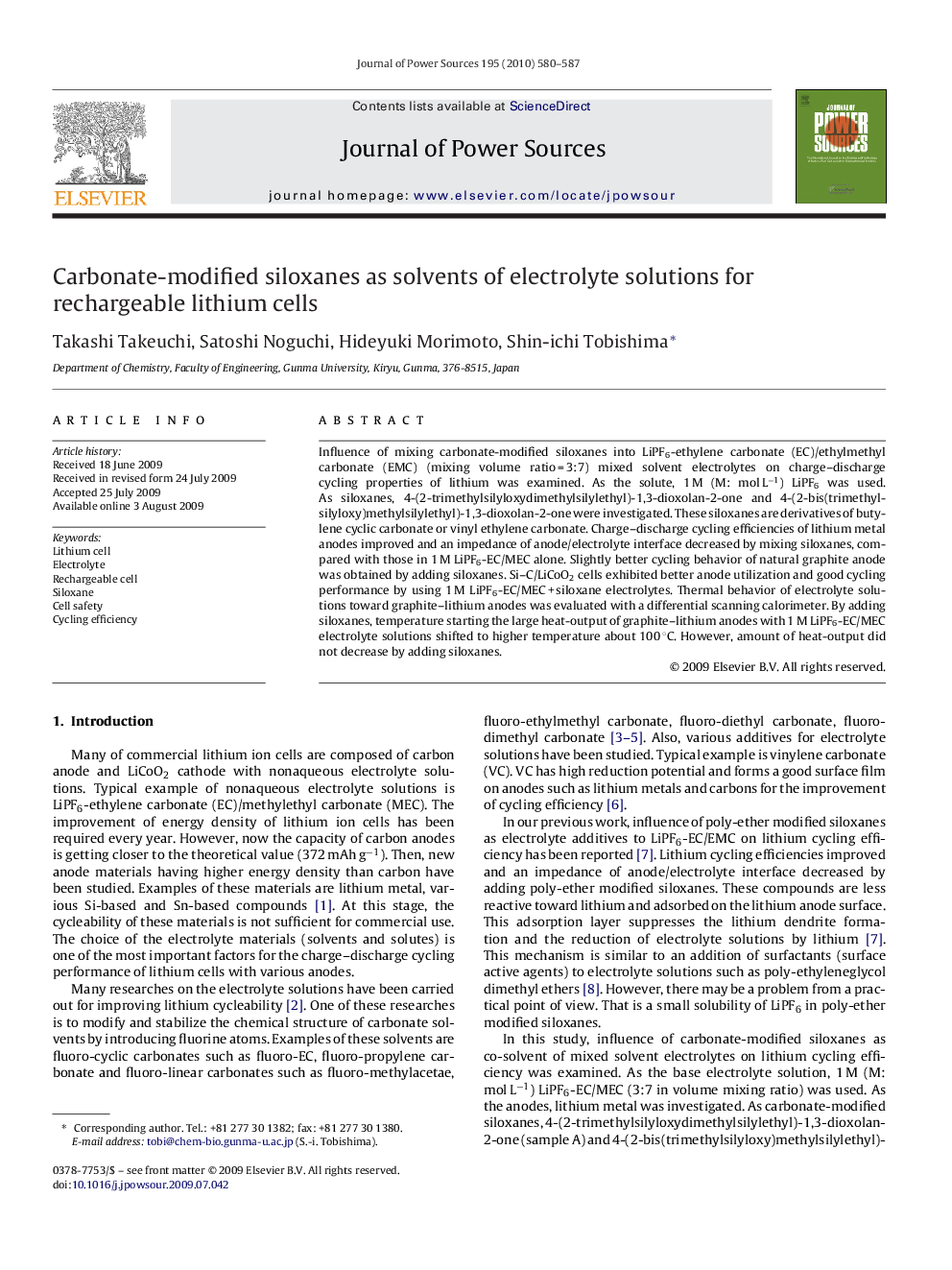| Article ID | Journal | Published Year | Pages | File Type |
|---|---|---|---|---|
| 1293908 | Journal of Power Sources | 2010 | 8 Pages |
Influence of mixing carbonate-modified siloxanes into LiPF6-ethylene carbonate (EC)/ethylmethyl carbonate (EMC) (mixing volume ratio = 3:7) mixed solvent electrolytes on charge–discharge cycling properties of lithium was examined. As the solute, 1 M (M: mol L−1) LiPF6 was used. As siloxanes, 4-(2-trimethylsilyloxydimethylsilylethyl)-1,3-dioxolan-2-one and 4-(2-bis(trimethylsilyloxy)methylsilylethyl)-1,3-dioxolan-2-one were investigated. These siloxanes are derivatives of butylene cyclic carbonate or vinyl ethylene carbonate. Charge–discharge cycling efficiencies of lithium metal anodes improved and an impedance of anode/electrolyte interface decreased by mixing siloxanes, compared with those in 1 M LiPF6-EC/MEC alone. Slightly better cycling behavior of natural graphite anode was obtained by adding siloxanes. Si–C/LiCoO2 cells exhibited better anode utilization and good cycling performance by using 1 M LiPF6-EC/MEC + siloxane electrolytes. Thermal behavior of electrolyte solutions toward graphite–lithium anodes was evaluated with a differential scanning calorimeter. By adding siloxanes, temperature starting the large heat-output of graphite–lithium anodes with 1 M LiPF6-EC/MEC electrolyte solutions shifted to higher temperature about 100 °C. However, amount of heat-output did not decrease by adding siloxanes.
